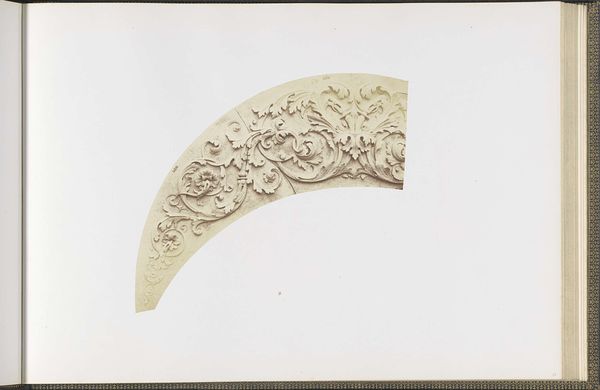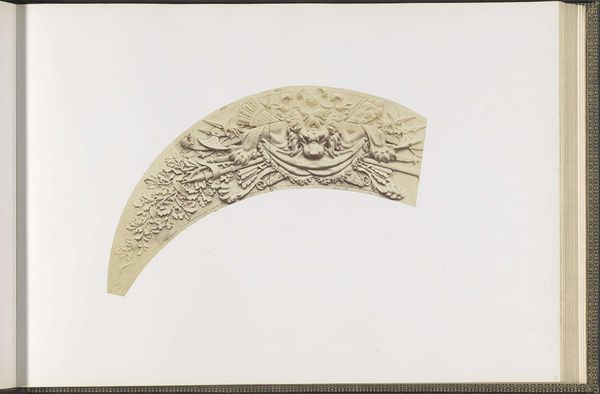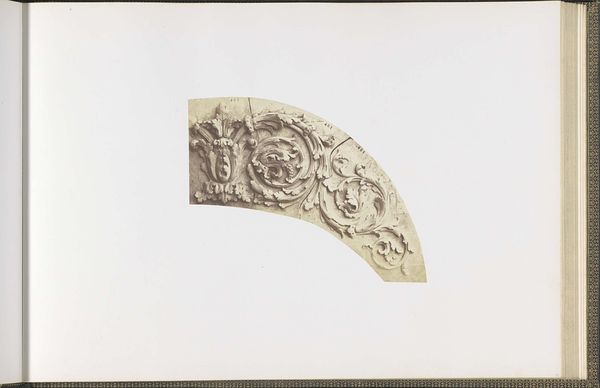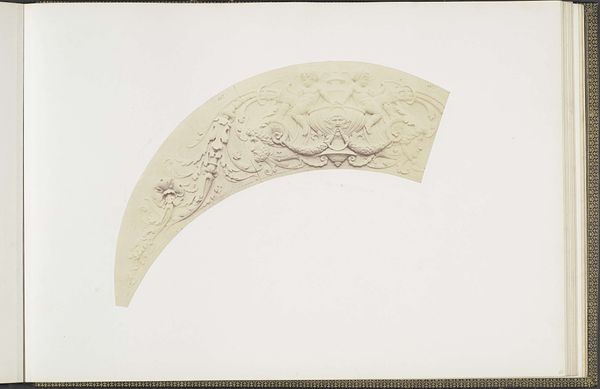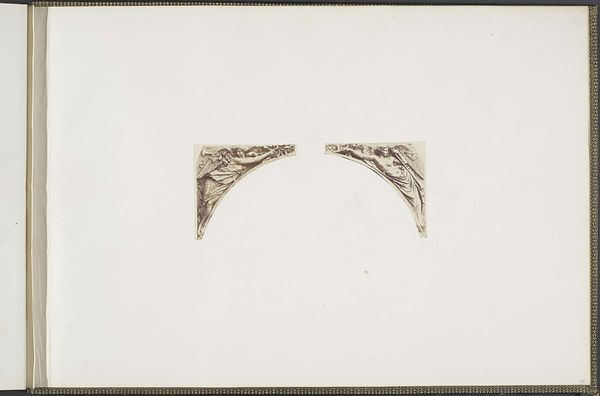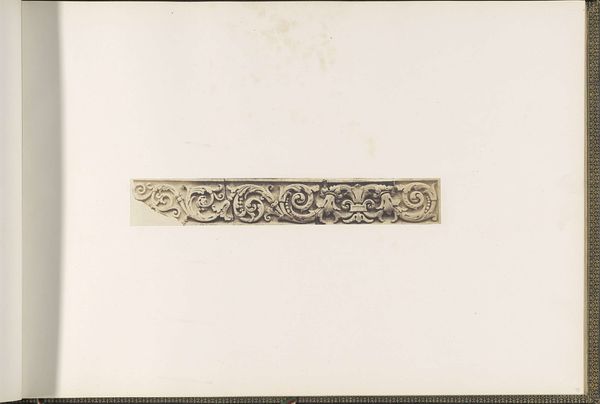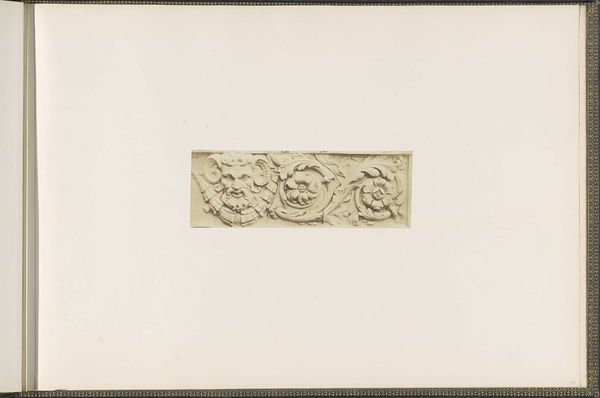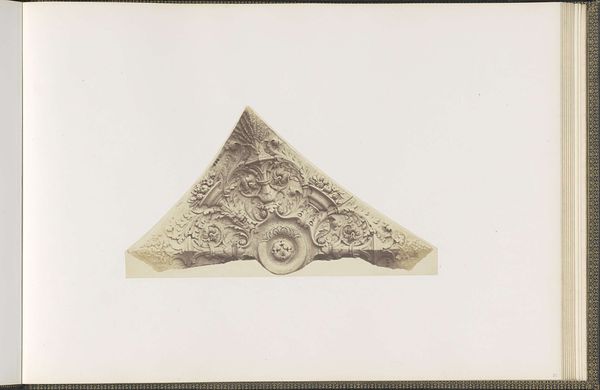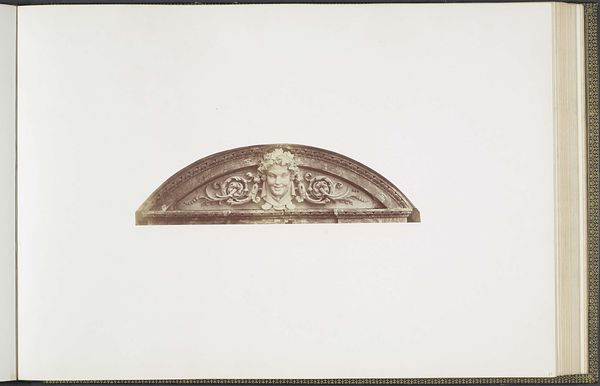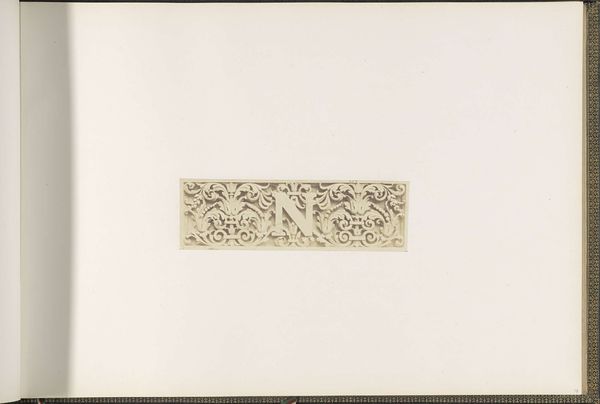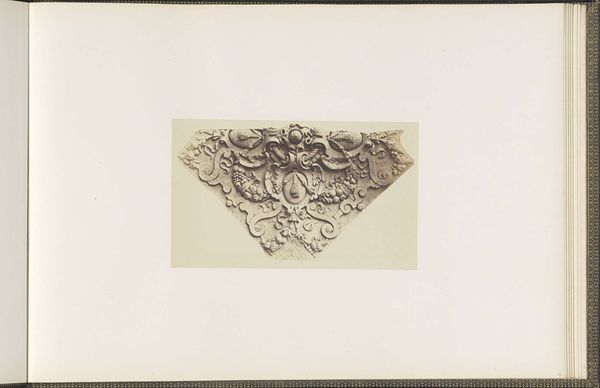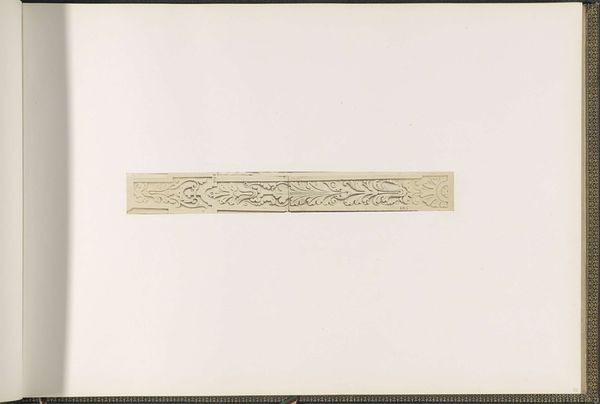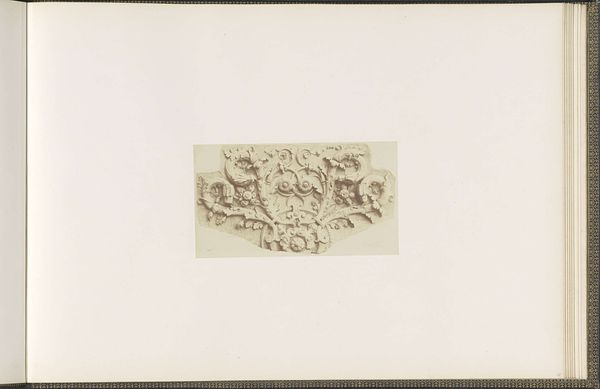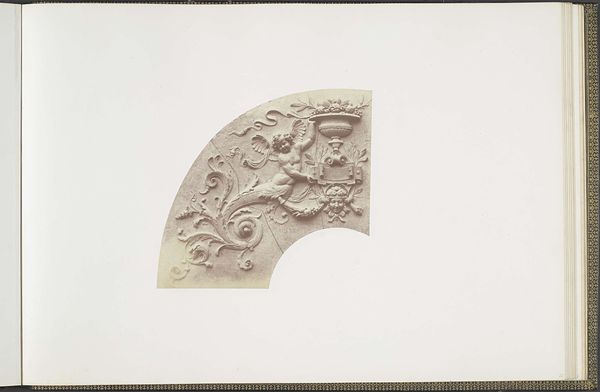
Gipsmodel voor een gewelfversiering van het Pavillon Richelieu in het Palais du Louvre c. 1855 - 1857
0:00
0:00
print, photography
#
neoclacissism
# print
#
photography
#
decorative-art
Dimensions: height 376 mm, width 523 mm
Copyright: Rijks Museum: Open Domain
Editor: This is a photograph by Edouard Baldus, taken around 1855-1857, of a plaster model for a vault decoration in the Louvre's Richelieu Pavilion. I'm struck by how this image preserves a fragment of grand architecture; it almost feels like holding a lost piece of history. What can you tell me about this piece and the historical context surrounding it? Curator: This photograph speaks volumes about 19th-century France and its complex relationship with power, representation, and historical narratives. Baldus’s photograph doesn’t merely document a decorative element, but highlights how architecture and its ornamentation became tools for constructing national identity and legitimizing imperial ambitions during the Second Empire. Editor: How so? Curator: Think about it: the Louvre, a former royal palace, was being transformed into a public museum – a space for the people, yet still radiating an aura of power. The Richelieu Pavilion, with its elaborate Neoclassical decorations, was part of this larger project of shaping a particular image of France – one that drew on classical ideals of beauty and order, while simultaneously asserting France's dominance on the world stage. Photography, as a relatively new medium, played a crucial role in disseminating this image. Baldus was commissioned to document these projects, his images then became part of a larger propaganda machine that reinforced prevailing ideologies. The photograph also reinforces the relationship between art and power: it reminds us that seemingly neutral representations can be deeply implicated in systems of social and political control. Editor: That’s fascinating! So even a picture of decorative art can reveal these larger power structures at play? Curator: Exactly. It invites us to consider the relationship between aesthetics and politics, between art and ideology. The photo’s meticulous detail serves a political purpose and aesthetic end. What do you think that purpose was? Editor: I hadn't considered how intertwined art, power, and national identity could be. It changes how I see not only this photograph but the whole role of photography. Thanks.
Comments
No comments
Be the first to comment and join the conversation on the ultimate creative platform.
